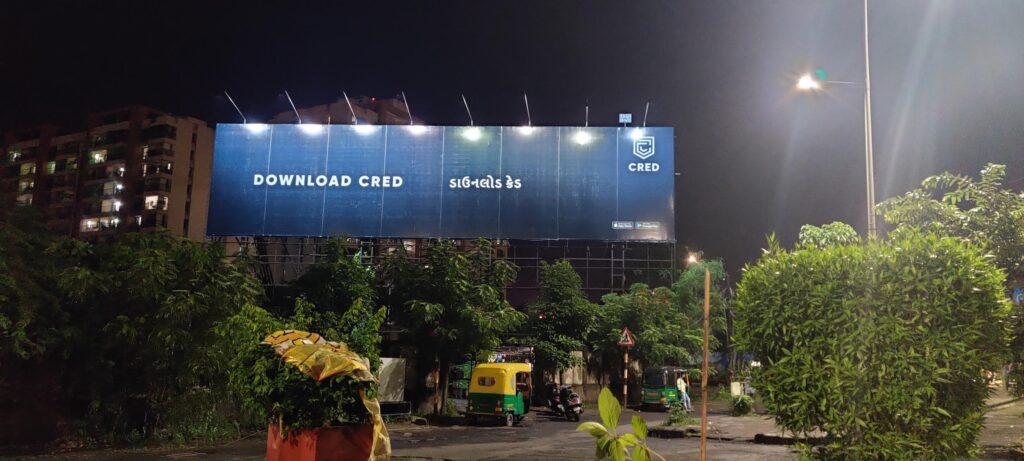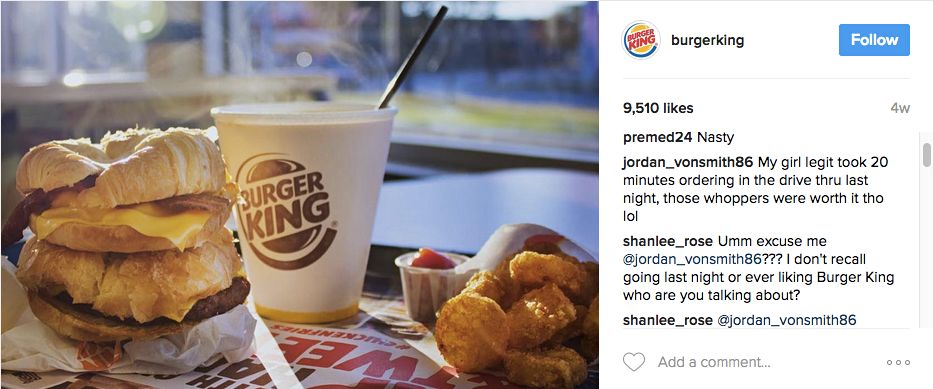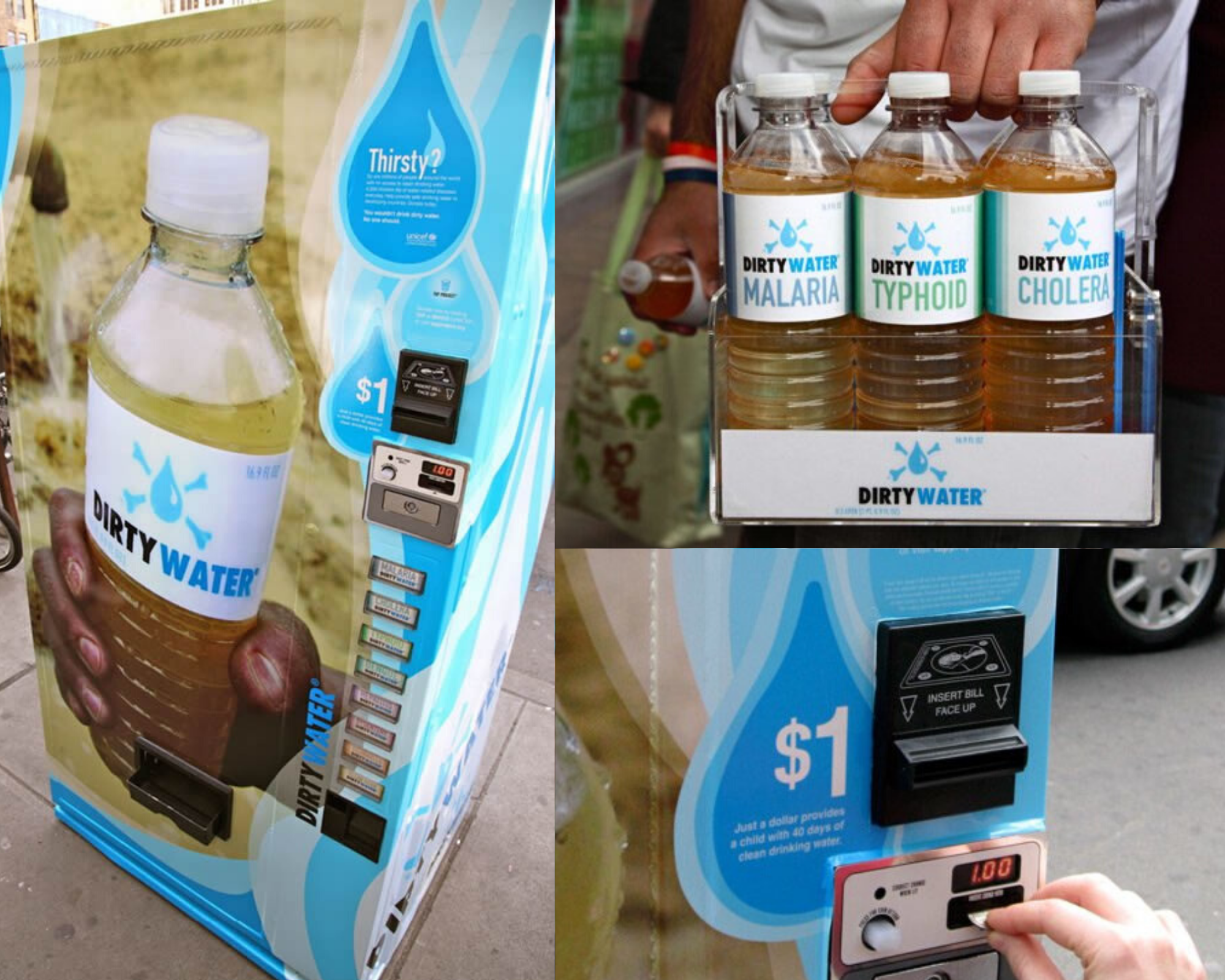A couple of months ago, I saw a hoarding from CRED in my city. A couple of days after that, I saw one more of that kind.

Naturally, I thought, what’s the message here? What’s the benefit here? There’s essentially no meat in this hoarding.
Basically, it left me confused, and churning my rational wheels. Now that I am talking about it, I see what CRED did there.
The simplicity of otherwise fancy hoardings surprised me, and left an impression to remember.
That, my friends, is what guerrilla marketing does.
Didn’t quite understand? Well, keep reading.
What is Guerrilla Marketing?
Guerrilla marketing is a type of marketing where brands perform activities and produce content that entices an emotion of shock or surprise in their audience.
Simply put, it is the act of using odd, non-traditional and innovative ideas that drive sales, higher reach and brand recall (just how it happened for me with CRED).
Say, you are working for a brand, and want to make an impact on the audience. Think about the weirdest, and of course the most lucrative placement (or a platform), and the most shocking messaging, like something which brings “Haaila/Whaaaaaaattt?” from your audience. That would be a guerrilla marketing opportunity for you.
History of Guerrilla Marketing
Back in 1984, Jay Conrad Levinson coined the term in his book Guerrilla Marketing.
The advent of internet marketing and the shift from traditional media to electronic outlets was one of the major driving forces of guerrilla marketing.
The name is derived from ‘guerrilla warfare’, which means unconventional warfare using different tactics than the ones generally practiced in order to fulfill a purpose.
In his book, Levinson says that advertising campaigns need to be shocking, unique, outrageous and clever. They need to create a buzz.
Examples of Guerrilla marketing
Here are a few recent and some successful examples of guerrilla marketing.
1. Deadpool’s Tinder Profile
Right before Deadpool’s movie release on Valentine’s Day, the legend showed up on Twitter for various users with cheeky and quirky taglines.
Those who swiped right and matched with the profile received a link to purchase the movie tickets.

This garnered heavy-duty attention on social media, not only because Tinder is not the most conventional platform for promotions, but also for the fun element associated with it.
2. Breakup in Public on Burger King’s Instagram
A public breakup (allegedly) happened on one of the posts shared by the fast-food chain.

Comments were exchanged between a couple who gathered drama, interactions and fun to the scenario.
3. UNICEF’s Dirty Water Vending Machines
When it comes to water usage, a lot of us think that we have a free hand.
In reality, we don’t.
Even though all of us have reusable water bottles on us or at our homes, we forget about them (conveniently?) and purchase bottled water, which absolutely harms the environment.
UNICEF decided to build on this, and set up a dirty water vending machine with a question, “What if those bottles of water you waste money on were filled with dirty water?”.

This campaign reminded people of how privileged they are if they are getting access to water, while several parts of the world still don’t have access to clean water.
How does it work?
If I have to put it in short,
Guerrilla marketing works like a joke. Placement and timing are paramount to get it right.
The marketing tactic works on the emotions and reactions triggered by your content. Yes, there’s some neuromarketing at play here.
The idea is to go above and beyond what your brand traditionally does and deliver a memorable experience to the audience.
Types of Guerrilla Marketing
Let’s talk about the types of guerrilla marketing, shall we?
Keeping it simple here so as to avoid more confusion.
1. Outdoor Guerrilla Marketing
Shocking advertisements you see on hoardings, banners, prints, flyers and such likes are an example of outdoor guerrilla marketing.
These are supposed to throw you off track, stop and see what’s going on and remember the brand and the product they advertised for a long time to come.
An example of outdoor guerilla marketing is IKEA’s sofas at bus stations in Australia.

2. Indoor Guerrilla Marketing
Indoor guerrilla marketing consists of advertising in an enclosed space.
Places like malls, school and university campuses, museums, art galleries, are great places to implement your indoor advertising campaign.
Large billboards to flash mobs and even characters in the form of soft toys have succeeded in their campaigns so far.
An example of indoor marketing is a flash mob organized by T-Mobile in 2009 at Liverpool Street Station. The commercial garnered 40M views on YouTube, won TV Commercial of the Year at British Television Advertising Awards and recorded a 52% hike in their sales.
3. Event Ambush Marketing
Although they overlap a bit with outdoor guerrilla marketing, this type of advertising happens specifically at events organized for the benefit of public sentiment.
Vending machines, interactive booths, props, stickers, art installations, etc are examples of event guerrilla marketing.
Such advertising campaigns can be run at festivals, sporting events, concerts and such likes to garner mass attention.
Example of event ambush guerrilla marketing is #FijiGirl from Fiji Water’s Golden Globes photobomb.

4. Experiential Guerrilla Marketing
Experiential guerrilla marketing is when you attempt to surprise your audience with an experience (actual or driven through VR) that convinces them to make a purchase.
The aim is to get the audience to interact with the brand and thus deliver high impact.
Most recent example of experiential marketing is the Google store where you experience the vastness of its products and their potential.
Why should brands practice guerrilla marketing?
Apart from the fact that brands have been visibly and actively practicing guerrilla marketing, here are some amazing reasons to implement it for your brand.
1. Works for all kinds of businesses
If you think guerrilla marketing is possible only for big brands and high-end businesses, well, that’s not it.
In fact, studies have shown that it works amazingly well for small to mid-sized businesses.
34% of advertisers have turned to guerrilla marketing tactics owing to the efficacy of multimedia[1].
Say, you are running a dental clinic, and want to spread awareness for oral health in the neighborhood. You can think about flyers in a different style, rotten or broken teeth visible on pillars and light stands, and something that’s witty and fun.
Something as simple as this:

So, don’t assume that guerrilla marketing is not for you.
2. Low-cost
Just because the outdoors is involved in guerrilla advertising, doesn’t make it expensive. In reality, it is one of the most efficient and cost-effective marketing strategies for brands, especially in the D2C and B2C sectors.
It is low-cost because you can simply pick any outlet, any touch point, and any moment to do it.
Places as invisible as streets for graffiti work, paintings, stickers, can turn a budgeted guerrilla marketing campaign into a successful one.
Rest assured, if you have a tight budget for marketing (which you would probably have), think about going for this tactic.
3. Amazing reach
Campaigns and messaging in guerrilla marketing are meant to reach the masses.
No matter where you do it, and how, this strategy ensures that you reach a great number of your audience with minimal effort.
RedBull took this quite literally and reached earth’s stratosphere in a campaign they launched for RedBull Stratos.
Full story: RedBull collaborated with Austrian extreme athlete Felix Baumgartner and set a world record for the highest skydiving jump. They sent Baumgartner at over 128,100 feet into the air (stratosphere) in a helium balloon, from where he jumped down breaking the speed of sound by reaching a speed of 1342.8 km/h. His trip back to the earth lasted 9:09 minutes with 4:22 minutes of freefall. Needless to say, RedBull received the expected attention around the globe.
Watch the thrilling video here:
If your aim is to raise brand awareness, then this is the right way to go.
4. Leaves a lasting impression
Goes without saying that guerrilla advertising helps you leave a lasting impression on your viewers and audience’s mindsets.
Just how it happened with me for CRED. I still remember their hoarding, don’t I? And I am sharing it with you all, so that’s a double win for CRED, right there, just through a simple ad.
This strategy drives brand recall better than any other strategy out there, mainly because of the sentiments it elicits from the audience.
5. High ROI
Even if you implement a quaint, subtle, guerrilla marketing strategy, you are a winner.
Because the strategy amounts to low spendings against wider reach, you are guaranteed high ROI every time to strike the balance between the timing and the messaging.
Say, you distribute flyers for your new product in the neighborhood, which drives a mere 10 purchases and a possibility of repeat customers, won’t you think it is worth it?
That’s not to say that each guerrilla strategy is successful, many brands have failed at it too. But even that leads you to discovering what does not work for your audience.
As a matter of fact, guerrilla marketing tactics may evoke a negative response or a controversy if not executed fairly.
How to execute successful Guerrilla Marketing Campaigns?
Already thought of an idea for this tactic yet?
See how to execute a strategy for guerrilla marketing before you plan everything out.
1. Set your goals
This will always be the first thing I ask you to do when talking about strategy building.
You NEED to set your goals right. What is the purpose of the campaign? How quickly do you want to achieve those goals? Who all will be involved in it? What’s the budget?
These are some of the basic questions you should have an answer to before you plan your guerrilla marketing campaign.
2. Decide on the platform
Based on the goal you set, decide on the platform or the medium through which you want to share your message.
It can be as simple as merchandise, and as big as a billboard hanging over the city. Think of the viewership and visibility when you decide on this medium.
You want to go wild, but do not want to go stupid.
3. Think about the messaging
Next, think about the messaging, the copy that will go out.
How do you want the readers to react? What do you want them to do after interacting with your campaign?
Execute a reverse engineering strategy, if you will and think from the viewpoint of your audience for better decision making.
In 2018, IHOP changed its name to IHOb, albeit briefly and externally, to promote its new full burger menu.
A simple change gave them a massive viewership, and thereby sales.
4. Make sure to give a human touch
Do what you will, do not miss giving a human touch to your guerrilla marketing campaign.
You are talking to the public (humans?), and not robots. Hence, this is a crucial point for the success of your strategy.
Do not make your approach robotic or animated, at any cost.
5. Practice common sense and authenticity
Do not, I repeat, do not try to be over smart with your audience.
They know when you are lying or rounding up numbers.
Audiences these days want to see the realistic side of every brand they interact with or purchase from.
Keep that in mind when you run your guerrilla marketing campaign.
6. Monitor audience responses
Once you send your campaign out, keep a close eye on how your audience responds.
Is it giving the results you expected? Or is it something offtrack?
This would help you know your audience better and focus on more targeted campaigns in the future.
Conclusion
Guerrilla marketing was technically never out of vogue, and never will be.
It is here to stay as long as humans have emotions in them, unless we are replaced by cyborgs or robots (remembering Sheldon from The Big Bang Theory).
It won’t be unfair to say that guerrilla marketing is one of the most effective marketing strategies.
It provokes change, triggers emotions and generates buzz online and offline.
So, if your aim for 2023 is to be set differently and remembered for the stereotypes you break, do not hesitate to include guerrilla marketing.
Unquestionably, this is one of my favorites of all marketing strategies.
What do you think about guerrilla marketing? Tell me in the comments.
